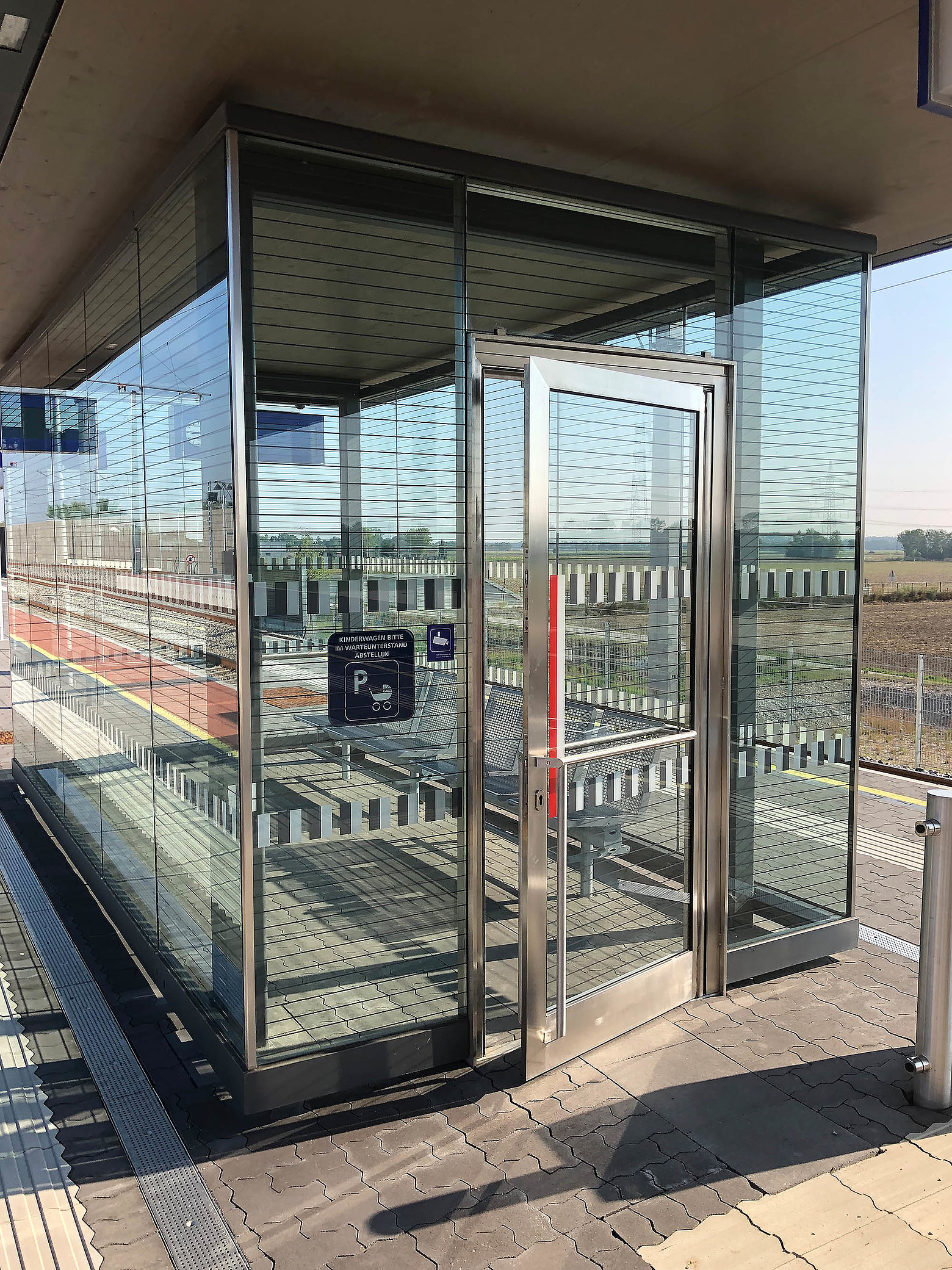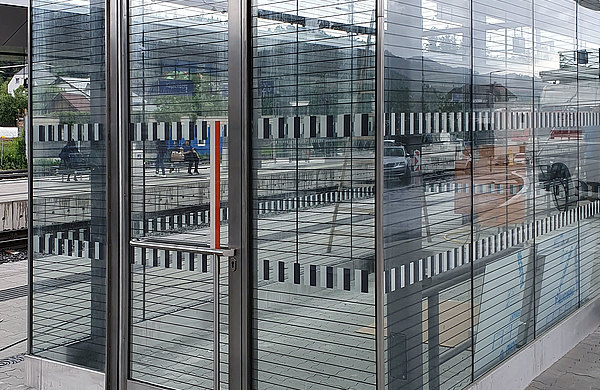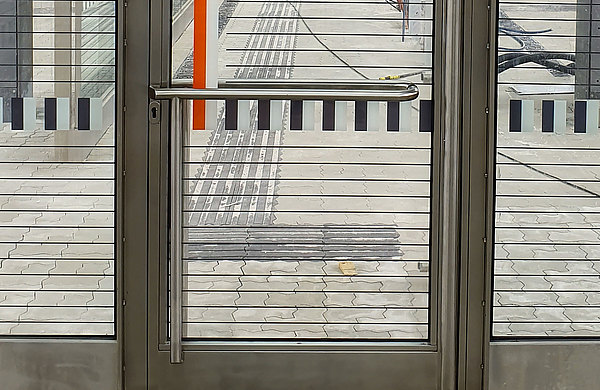ÖBB waiting booth, AT
Finger protection door for Austrian Federal Railways (ÖBB) waiting booth
New waiting areas for the ÖBB: greater security for railway travellers
At railway stations, things can get hectic. To allow railway passengers to travel safely, shielded from wind and weather, the Austrian Federal Railways (ÖBB) has developed so-called waiting booths, with finger protection doors that reliably protect all travellers, especially the little ones, from unintended injury.
New railway stations act as barrier-free mobility hubs for short and long-distance travel and are popular hang-outs for young and old. For years, the Austrian Federal Railways (ÖBB) have been modernising their many railway stations and stops, making them fit for a mobile future.
In Austria's Kapfenberg, the third-largest city in the federal republic of Styria, the old railway station is being renovated into a clear and bright facility. The ÖBB calculates that in future 2000 to 4000 people will use this railway station each day.
For the rail travellers, along with a modern waiting room, a new waiting booth has been installed to protect passengers from bad weather on the platform. This booth, designed by ostertagARCHITECTS from Vienna, offers reliable protection from wind, weather and noise. The waiting booth in Karpfenberg is a so-called standard element that, in future, will be used identically in numerous other railway stations and stops.
Waiting area with very strict materials and technology requirements
Une porte anti-pince-doigts de la gamme forster presto est l'élément d'accès au sas d'attente. Le A finger protection door from the forster presto range will be used as an entrance to the waiting booth. The steel profile system is suitable for flush-mounted single-leaf and double-leaf doors and windows as well as glazed fire and smoke protection enclosures, for which heat insulation is unnecessary. The profile system also fulfils the extremely high technical functionality requirements for a physical structure involved in railway operations and is able to withstand severe long-term stress.
The ÖBB were looking for a robust but also very simple entrance solution for the waiting booth. There was a strong desire to avoid door elements that required electronic monitoring with the accompanying expensive maintenance. CE labelling was required, with the manufacturer assuming responsibility for the product's conformity. C5 classification entails certification of a total of 200,000 opening cycles. Due to the fact that the waiting booths are to be used as standard elements in many railway stations, several extremely comprehensive test programs were carried out, ultimately certifying 800,000 opening cycles.
The material requirements were very strict. The stainless steel used with material number 1.4401 is an austenitic rustproof steel with outstanding corrosion resistance, whose surface was polished with grain size 220. This look has established itself internationally among public sector clients. At Kapfenberg railway station, the stainless steel has to withstand the scattering of winter salts and the fine abrasion of the trains' steel wheels. In selecting the right profile system, the developer's specification called for high impact resistance along with an ability to resist hurricane-force winds and the passage of high-speed trains travelling at up to 200 km/h.
Child-safe and vandal-secure
Reliable safety for large and small is one of the key requirements in the public sphere. In the hustle and bustle of a journey, parents can't keep an eye on their children at all times. Due to their age, small children are barely aware of the risks in a railway station and cannot correctly judge potentially dangerous places. The finger protection door from the forster presto range used in Kapfenberg, with its round profile on the hinge side, reliably protects against accidental jamming. The advantage of this mechanical solution is that there is no need for any infra-red monitoring or safety electronics.
With its covered hinges, massive bar grips and a forster presto profile system designed for extreme long-term stress, the waiting booth entrance door is absolutely secure against vandals. In addition, with a leaf height of 2.60 metres, a door width of 1.10 metres and a door leaf weighing more than 100 kg, enormous forces are generated that can also be safely absorbed by the profile system.
Barrier-free use
Even door leafs with high dead weight must also be barrier-free and easy to open. For that reason a power-assist drive, triggered by angle monitoring, is used in Kapfenberg. If the door is opened by 5 degrees, a motor begins to push open the door leaf. A mechanical opening limiter ensures that the opening angle is no greater than 90 degrees when a gust of wind or draught from a passing train also affects the door.
Outstandingly attractive design
The waiting booth at Kapfenberg's new railway station is enveloped in a capacious glazing, which must also fulfil special barrier-free requirements. The glass had to be secure against bird strikes, offer great transparency to enable social monitoring of all platform areas and at the same time be easily perceptible for the visually impaired. Thin horizontal strips and contrasting graphical surfaces ensure the required optical characteristics are achieved.
Conclusion
In the forster presto profiles, the developer, architect and everyone involved in the planning and implementation have opted for a sophisticated, elegant, low-maintenance solution. The profile system also meets the strictest railway operation requirements. The waiting booth with finger protection is now part of the ÖBB's standard platform fittings plan and will be installed across Austria over the next few years. When the ÖBB is also on the move in future, reliably and on time, it will have much to do with the care taken to select the right materials.
Gare de Kapfenberg, Steiermark, Austria
Finger protection door (forster presto)
Architect: ostertagARCHITECTS, Vienna
Fabricator: Metallbau Wilhelmer Projekt GmbH, Oberkolbnitz
Building owner: ÖBB Infrastruktur AG, Vienna



